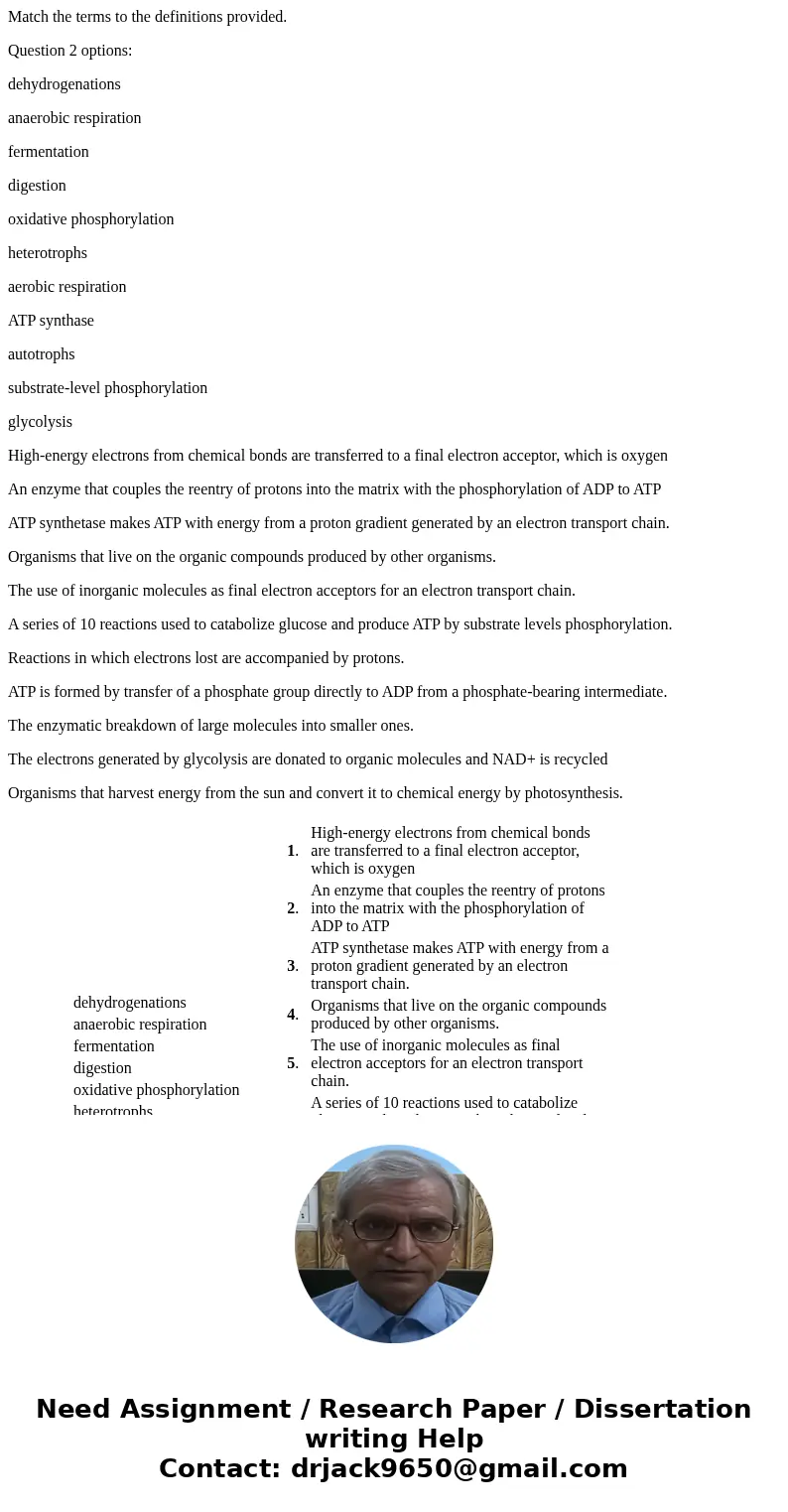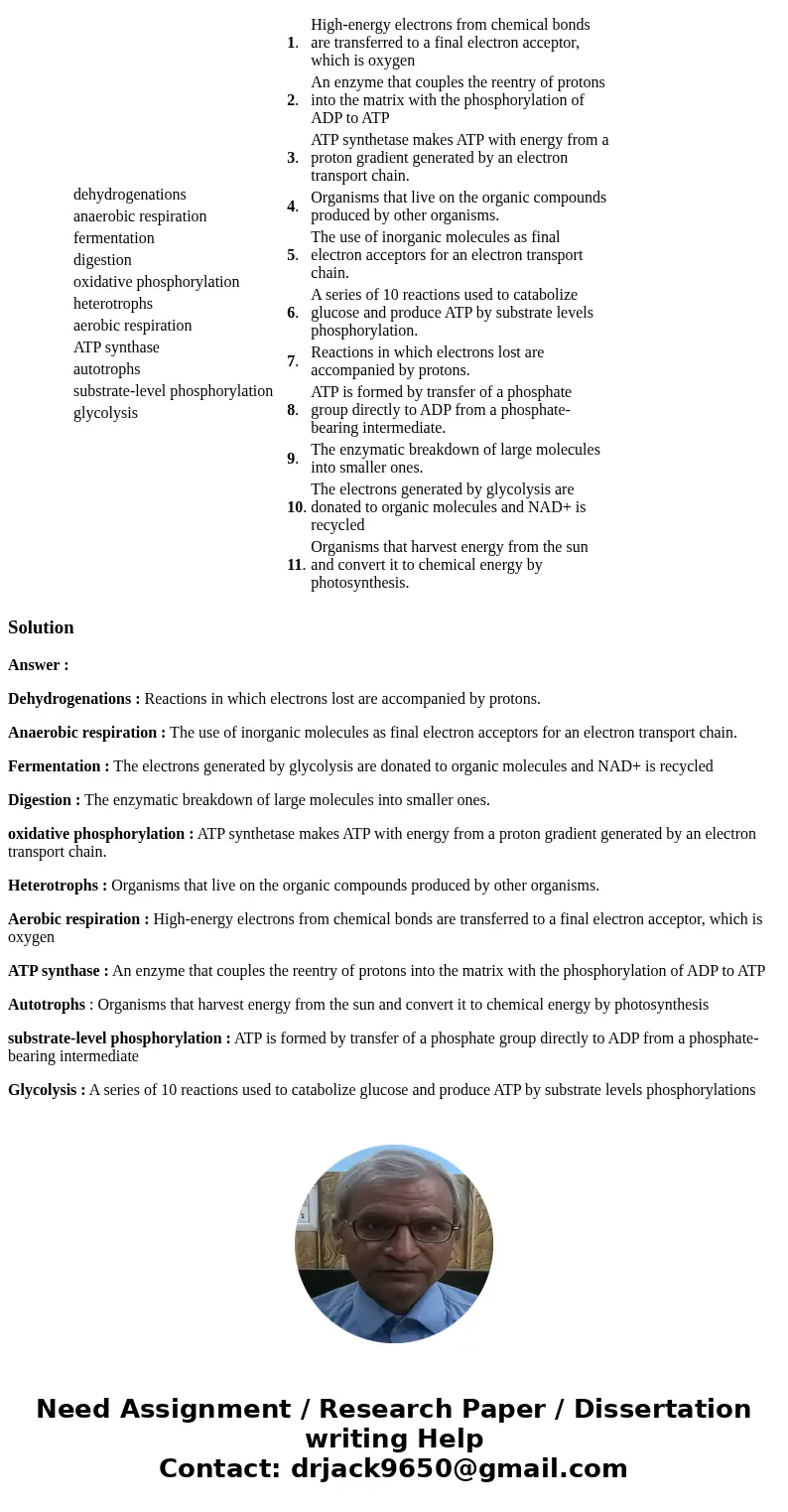Match the terms to the definitions provided Question 2 optio
Match the terms to the definitions provided.
Question 2 options:
dehydrogenations
anaerobic respiration
fermentation
digestion
oxidative phosphorylation
heterotrophs
aerobic respiration
ATP synthase
autotrophs
substrate-level phosphorylation
glycolysis
High-energy electrons from chemical bonds are transferred to a final electron acceptor, which is oxygen
An enzyme that couples the reentry of protons into the matrix with the phosphorylation of ADP to ATP
ATP synthetase makes ATP with energy from a proton gradient generated by an electron transport chain.
Organisms that live on the organic compounds produced by other organisms.
The use of inorganic molecules as final electron acceptors for an electron transport chain.
A series of 10 reactions used to catabolize glucose and produce ATP by substrate levels phosphorylation.
Reactions in which electrons lost are accompanied by protons.
ATP is formed by transfer of a phosphate group directly to ADP from a phosphate-bearing intermediate.
The enzymatic breakdown of large molecules into smaller ones.
The electrons generated by glycolysis are donated to organic molecules and NAD+ is recycled
Organisms that harvest energy from the sun and convert it to chemical energy by photosynthesis.
|
|
Solution
Answer :
Dehydrogenations : Reactions in which electrons lost are accompanied by protons.
Anaerobic respiration : The use of inorganic molecules as final electron acceptors for an electron transport chain.
Fermentation : The electrons generated by glycolysis are donated to organic molecules and NAD+ is recycled
Digestion : The enzymatic breakdown of large molecules into smaller ones.
oxidative phosphorylation : ATP synthetase makes ATP with energy from a proton gradient generated by an electron transport chain.
Heterotrophs : Organisms that live on the organic compounds produced by other organisms.
Aerobic respiration : High-energy electrons from chemical bonds are transferred to a final electron acceptor, which is oxygen
ATP synthase : An enzyme that couples the reentry of protons into the matrix with the phosphorylation of ADP to ATP
Autotrophs : Organisms that harvest energy from the sun and convert it to chemical energy by photosynthesis
substrate-level phosphorylation : ATP is formed by transfer of a phosphate group directly to ADP from a phosphate-bearing intermediate
Glycolysis : A series of 10 reactions used to catabolize glucose and produce ATP by substrate levels phosphorylations


 Homework Sourse
Homework Sourse